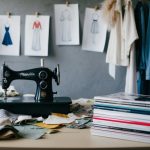Best DIY Fashion Hacks for a Sustainable Wardrobe: Simple Tips for Eco-Friendly Style
Creating a sustainable wardrobe doesn’t just benefit the environment, it also allows us to express our creativity through innovative DIY fashion hacks. By transforming old pieces and upcycling fabrics, we can give our clothes a new lease on life and reduce our environmental impact. Upcycling outerwear into stylish, functional pieces is a sustainable way to revamp our wardrobe.
Simple techniques like DIY distressing and combining different fabrics can bring a fresh and unique look to our closet. Organizing our closets and assessing what we already own can inspire new ways to reuse and recycle our garments. Embracing sustainable practices in fashion helps us build a wardrobe that’s both chic and eco-friendly.
The journey towards a sustainable wardrobe starts with small, manageable steps. From rewearing what we already have to carefully selecting new pieces, every choice we make counts. With a few easy DIY tricks, revamping our wardrobe sustainably can be enjoyable and rewarding.
Understanding Sustainable Fashion
Sustainable fashion places an emphasis on mindful garment production and consumption with a focus on environmental benefits and ethical practices. Being eco-conscious involves recognizing the impact of our clothing choices on the planet and opting for more sustainable alternatives.
The Rise of Eco-Consciousness
In recent years, the fashion industry has seen a significant shift towards eco-consciousness. Advances in technology and increased access to information have made us more aware of the environmental impact of our clothing choices.
This growing awareness has led to a rise in demand for sustainable fabrics like organic cotton, linen, and Tencel. Brands are responding to this demand by sourcing materials responsibly and reducing waste.
Consumers are now more informed and prefer transparency from fashion companies about their manufacturing processes, leading to an industry-wide push towards sustainability. As we become more eco-conscious, our shopping habits reflect an increasing preference for quality over quantity, ensuring that our wardrobe choices support both our values and the environment.
Fast Fashion vs. Sustainable Fashion
Fast fashion refers to inexpensive clothing rapidly produced by mass-market retailers in response to the latest trends. The fast fashion model is built on quick turnover and short garment lifespans, which contributes to excessive waste and environmental degradation.
In contrast, sustainable fashion prioritizes longevity, quality, and ethical production. It encourages us to buy fewer items, but those we do buy are designed to last, reducing the need for constant replacement.
Sustainably produced garments often use eco-friendly materials and ethical labor practices. This approach also promotes upcycling and recycling, helping to minimize waste and reduce our environmental footprint. Through these practices, sustainable fashion seeks to challenge and eventually change the pervasive fast fashion culture.
Assessing Your Wardrobe
To build a sustainable wardrobe, we need to evaluate what we already own and understand the foundations of mindful consumption.
Conducting a Closet Audit
The first step is to declutter and sort through everything we have. We should pull out all clothing items from our closets and drawers, laying them out in a visible space.
We categorize each piece: keep, donate, or recycle. This helps us identify what we wear regularly, discover forgotten favorites, and recognize unnecessary items. It’s also an opportunity to assess the condition of each item and decide if any need repair.
By conducting this audit, we gain a clear picture of our wardrobe’s current state. It helps us make more informed decisions and reduces impulsive purchasing. Plus, it encourages us to appreciate and utilize what we already have.
Wardrobe Foundation and Mindful Consumption
With our closets organized, we can focus on building a solid wardrobe foundation. Essential pieces like classic shirts, well-fitting jeans, and quality trousers form the backbone of a versatile wardrobe.
It’s crucial to invest in high-quality, sustainable fabrics which wear well over time. Opt for pieces made from organic cotton, linen, or Tencel. These materials have a lower ecological impact and are better for our skin and the environment.
Mindful consumption means choosing timeless styles over fast fashion trends. By prioritizing durability and versatility, we not only save money in the long run but also contribute to a more sustainable fashion industry. This thoughtful approach minimizes waste and reflects our commitment to a conscious lifestyle.



